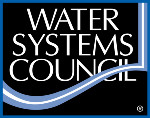
Water Systems Cost Savings Act Introduced in U.S. House

WASHINGTON, DC, Sept. 17, 2015 — The Water Systems Cost Savings Act (H.R 3533 “Savings Act”), a bill to reduce federal, state and local costs of providing high quality drinking water to millions of Americans in rural communities by facilitating the use of cost-effective alternatives like water well systems, has been introduced in the U.S. House of Representatives by Rep. Richard Hanna (R-NY) and Rep. Jim Cooper (D-TN).
“We commend Rep. Richard Hanna and Rep. Jim Cooper for their leadership in bringing a reliable, cost-effective legislative solution to millions of Americans who lack an affordable water delivery system for their daily needs,” said Bo Andersson, Past President, Water Systems Council and President of Flomatic Corporation. “With the availability of economical alternatives like water well systems, every American should have access to safe drinking water. The Savings Act will help provide that access.”
“Traditional municipal water systems don’t work in every community, or are prohibitively expensive,” U.S. Rep. Richard Hanna said. “Fortunately, there are other options. Communities seeking federal assistance to upgrade their water infrastructure should be given the most comprehensive information possible so that they can build the most appropriate and cost-effective system that best meets their unique needs. This bill will encourage cost-effective alternatives that will save taxpayer dollars and free up resources to reduce the growing backlog of clean water infrastructure needs.
“Americans need the flexibility to choose the clean water source that suits them best, whether
city water or well water,” stated Rep. Jim Cooper. “This bill allows that flexibility while keeping
drinking water safe.”
The most recent Environmental Protection Agency (EPA) Drinking Water Needs Survey found a shortfall of $64 billion in drinking water infrastructure funding for small communities. The Water Systems Cost Savings Act will update existing EPA and U.S. Department of Agriculture (USDA) programs to provide cost-saving information to small communities facing drinking water challenges.
The legislation also ensures that alternative drinking water supplies such as individual, shared and community wells be considered in applications for federal funding for drinking water systems serving 500 or fewer people.
The Savings Act is supported by leading rural drinking water organizations, including the Water Systems Council, the Water Quality Association and the National Ground Water Association.
“The water crisis in America is not just one of supply, but of delivery, with many rural communities unable to afford traditional long-pipe methods of delivering safe drinking water to their residents,” said JJ Troccoli, Secretary/Treasurer, Water Systems Council and National Sales and Marketing Manager, Water Division, A. O. Smith Water Systems. “The Savings Act will provide these communities with the knowledge and resources necessary to implement affordable drinking water systems, including individual and community water well systems.”
Margaret Martens, Executive Director of the Water Systems Council, noted, “The effectiveness of water wells as a reliable, low-cost way to provide access to safe drinking water has been proven in projects across the nation that have realized costs savings of as much as 94% over conventional drinking water systems. This legislation is a win for rural America and for the American taxpayer.”
 Water Systems Council
Water Systems Council